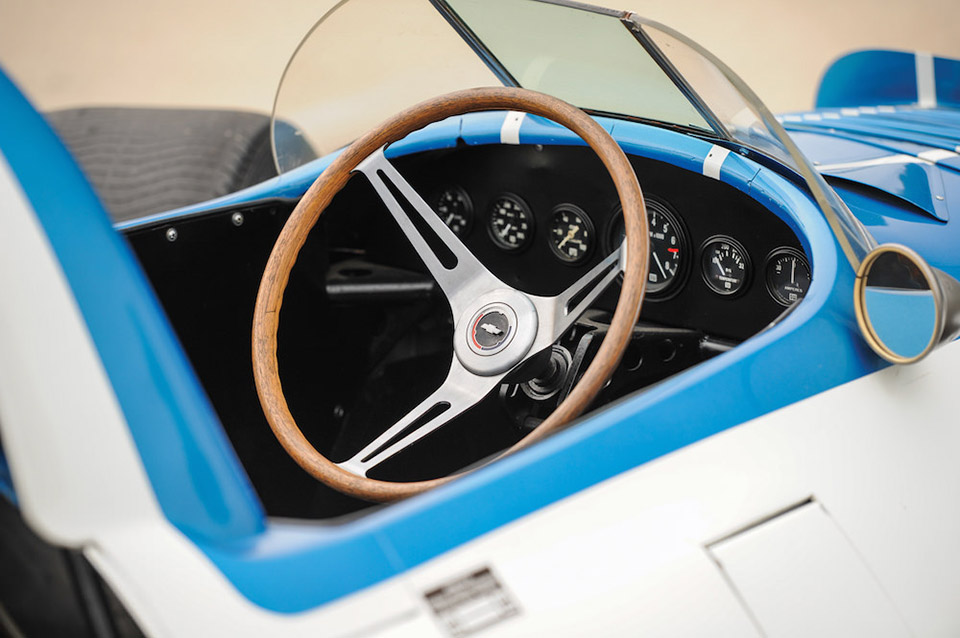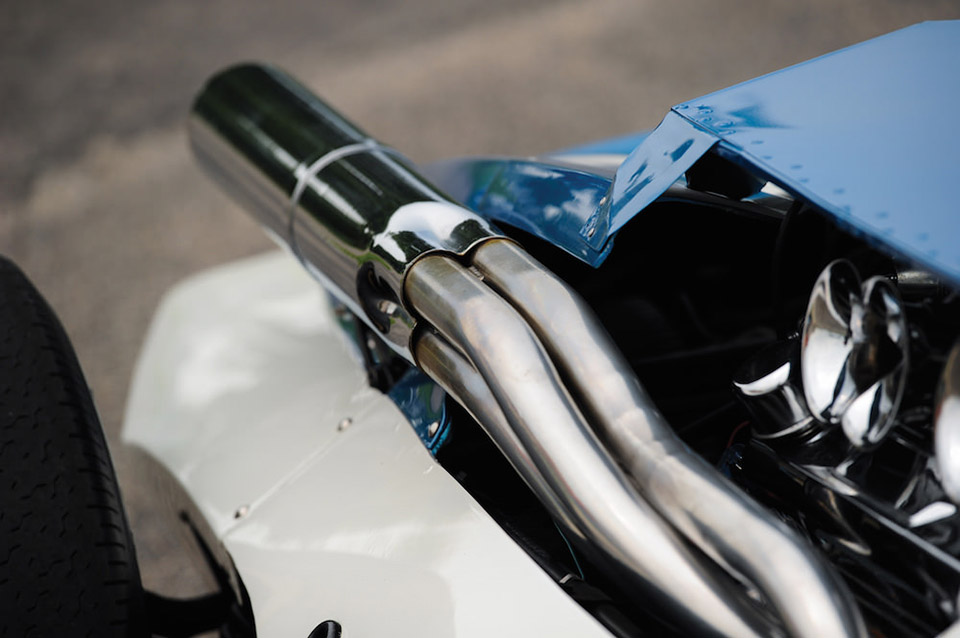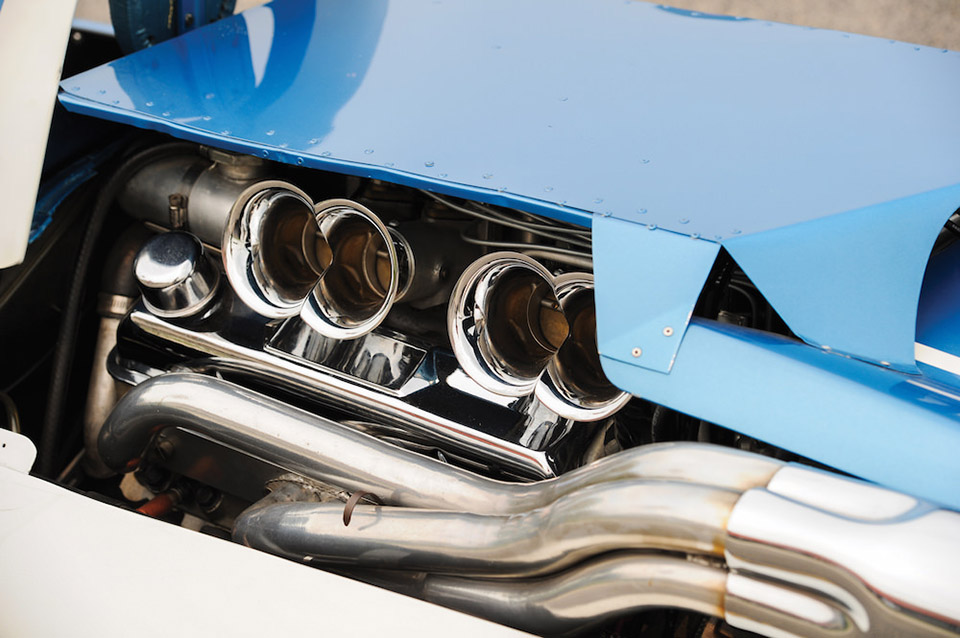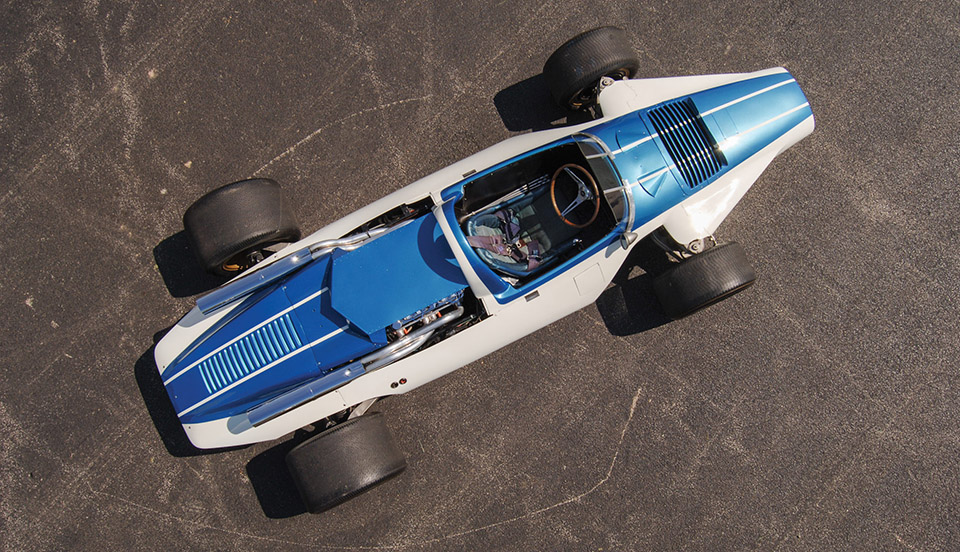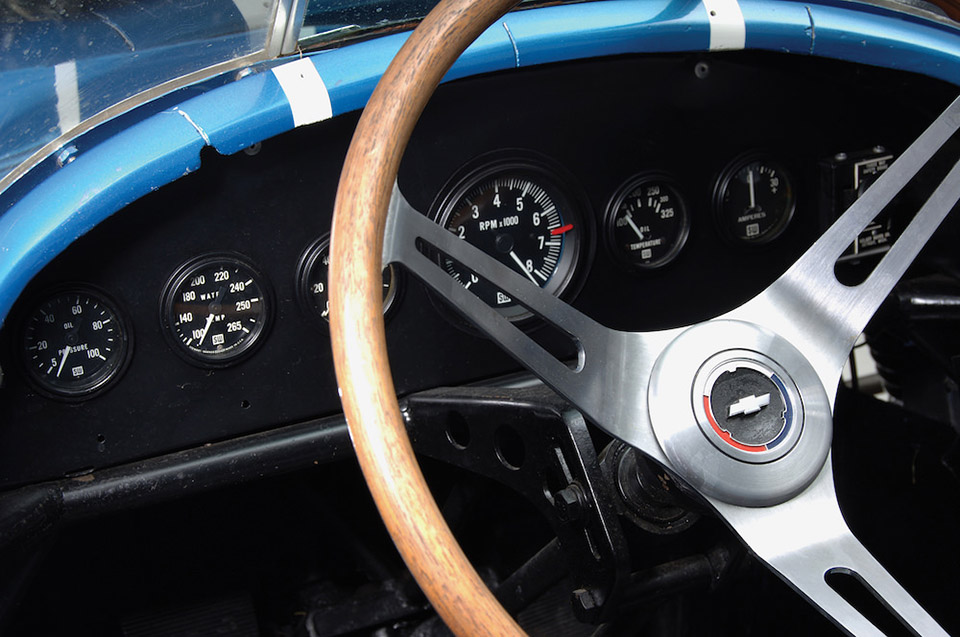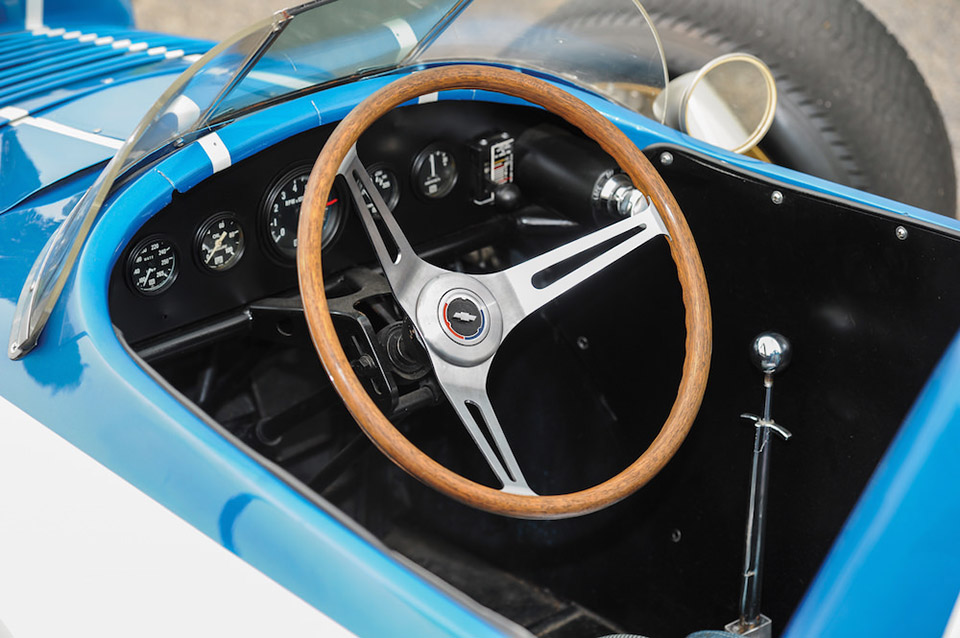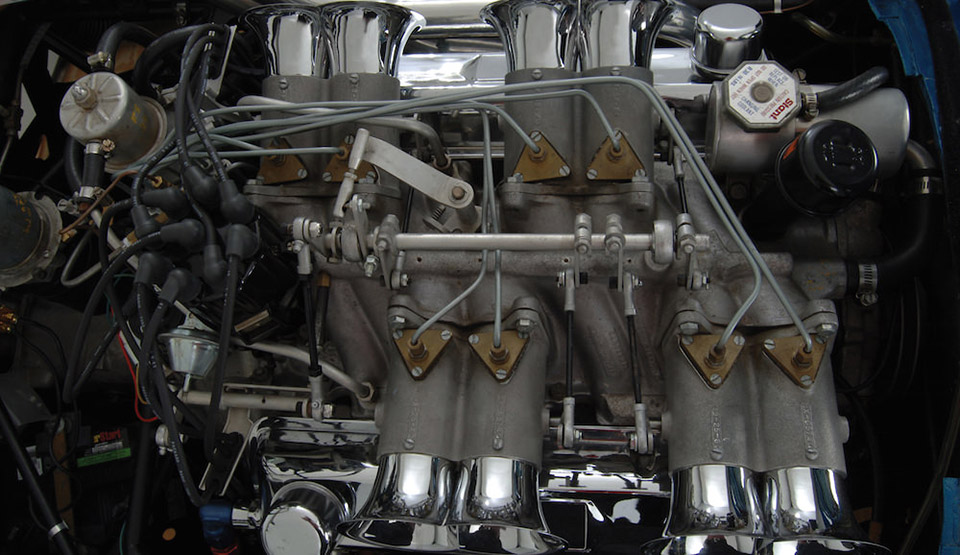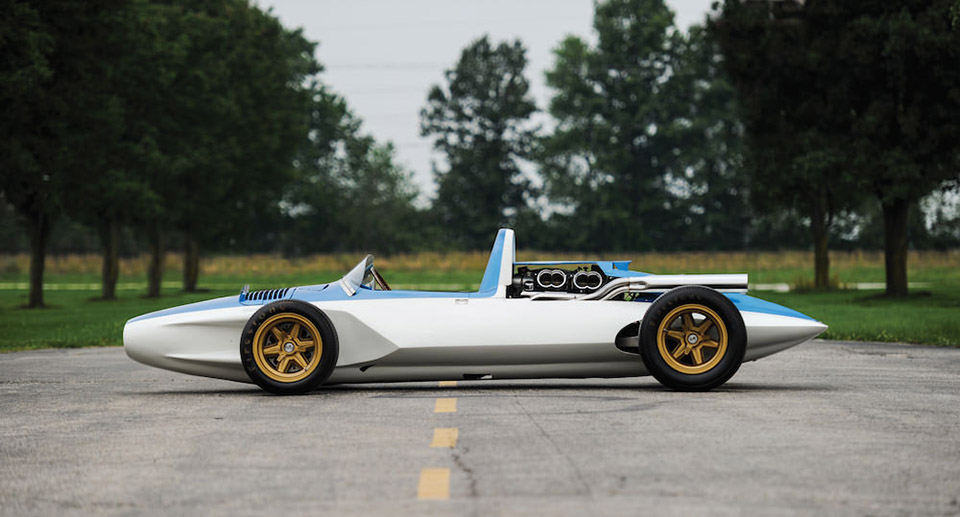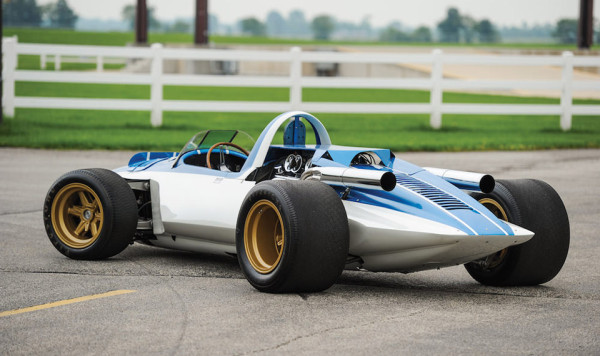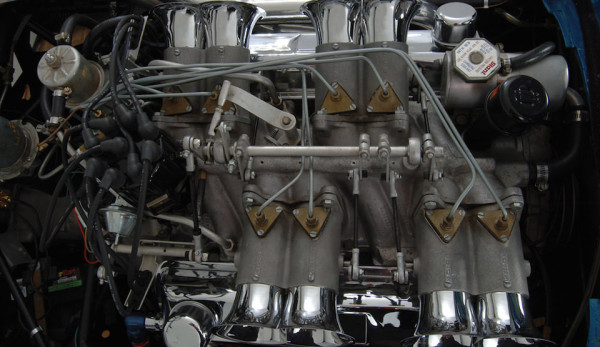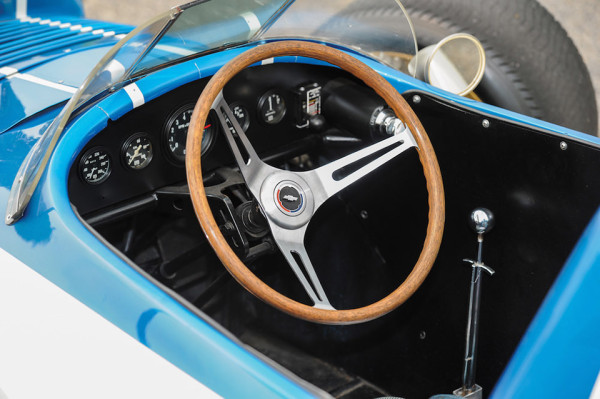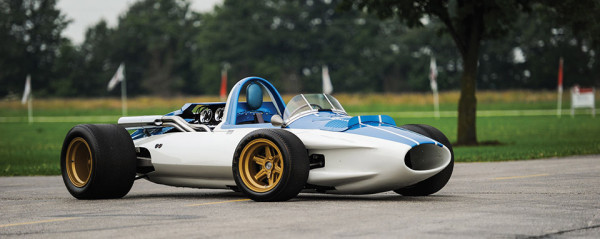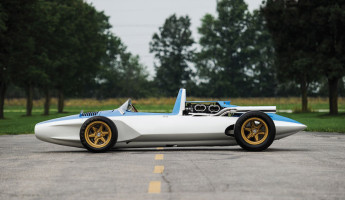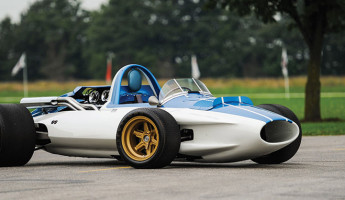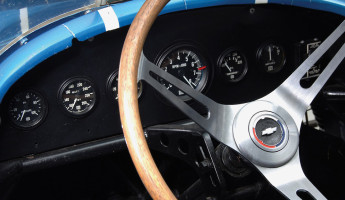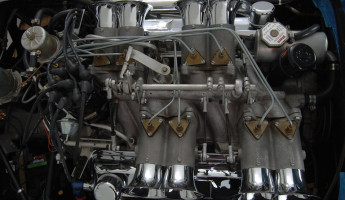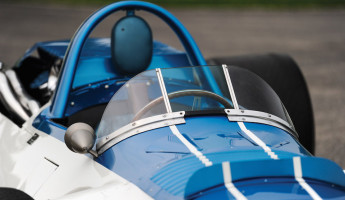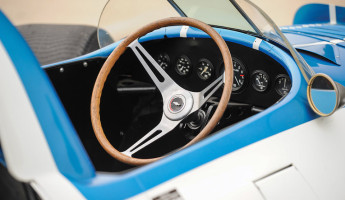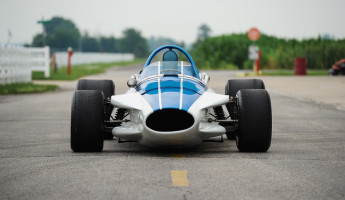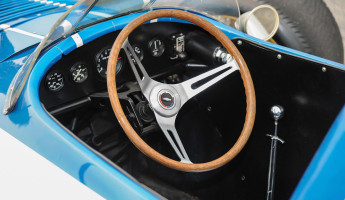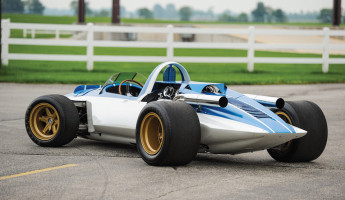The 1960 Chevrolet CERV 1 was engineered by Chevrolet exec Zora Arkus-Duntov, a visionary who had more riding on the vehicle than even Chevrolet may have imagined. It was ordered to be a test vehicle, a platform that Arkus-Duntov and his colleagues could push to the limits for research and development. Zora Arkus-Duntov wasn’t content with this academic environment, he wanted his CERV 1 on the race track — and he wanted it to win. To build a winner, and one that would lead Chevrolet engineering into the future, Arkus-Duntov’s team started with the basics. They designed one of the lightest frame and body designs that Detroit had seen. The body was supported by a chromium-molybdenum steel tubular space frame, weighing in at only 125 pounds. The fiberglass skin added another 80 pounds, making this combined body weight in range with your typical race car driver. Under the “hood”, the Chevrolet CERV 1 was first fitted with a OHV aluminum experimental V-8 engine. At 6,500 RPM, that engine produced 324 horsepower — a stunning amount of power for such a lithe body. Arkus-Duntov wanted more, and added a modified engine that was reported to produce 500 horsepower at 6,000 RPM. That was the most power a GM vehicle had ever produced, and it was a success that would echo into many new models in the years to come. By 1964, the CERV 1 was nearing the end of its flagship circuit. Chevrolet would replace this vehicle with a new test platform, the 1964 Chevrolet CERV II (which we covered when it was auctioned in 2013). Of the two, there’s nothing quite like this original, a car that changed the status quo for Chevrolet and birthed the modern Corvette as we know it. The 1960 Chevrolet CERV 1 is expected to sell for as much as $2,000,000 at auction in August. It will be one of the most historic Chevrolet transactions ever made. [hat tip: silodrome]
1960 Chevrolet CERV 1 | Gallery
